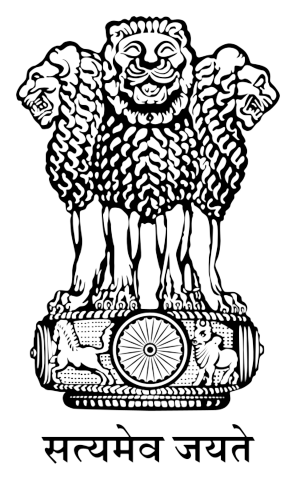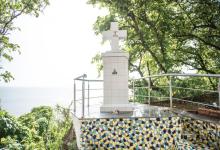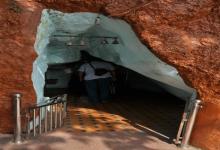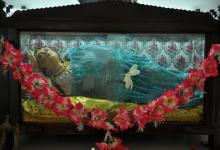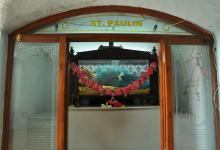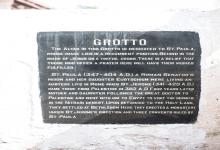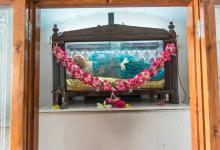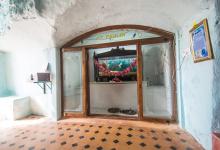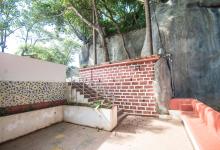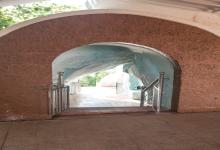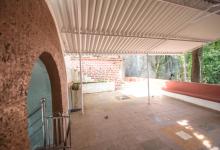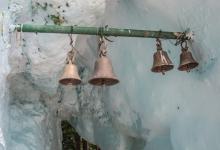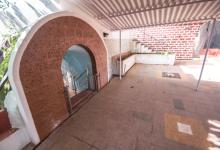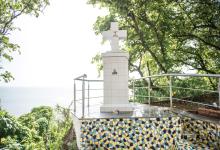A short distance away from the chapel, laterite steps lead down to a grotto where there is an altar dedicated to Santa Paula. Her image lies in a recumbent position. Her legs are maimed. Behind St. Paula is the image of Jesus Christ on a trefoil cross. How this statue of Santa Paula came to the grotto is shrouded in mystery. There is a legend that the figure was washed ashore. It was thrown back into the sea by the villagers but it kept coming back. It was then placed in the grotto by the villagers. There is a belief that anyone who prays to Santa Paula and lights a candle, has his wish fulfilled. Santa Paula lived from 347 to 404 AD. She hailed from an illustrious Roman family and was a staunch devotee of St. Jeromme. On losing her husband, she donated all her property to charity. She followed St. Jeromme on a pilgrimage to Bethlehem, alongwith her daughter and a group of Roman ladies who had vowed to lead a life of religious austerity. They settled down in a convent around the Basilica of the Nativity in Bethlehem.
The Feast of the Grotto is celebrated on 2nd August (evening). A large number of persons, living in the Raj Bhavan campus, as well as the nearby villages, attend this event.



